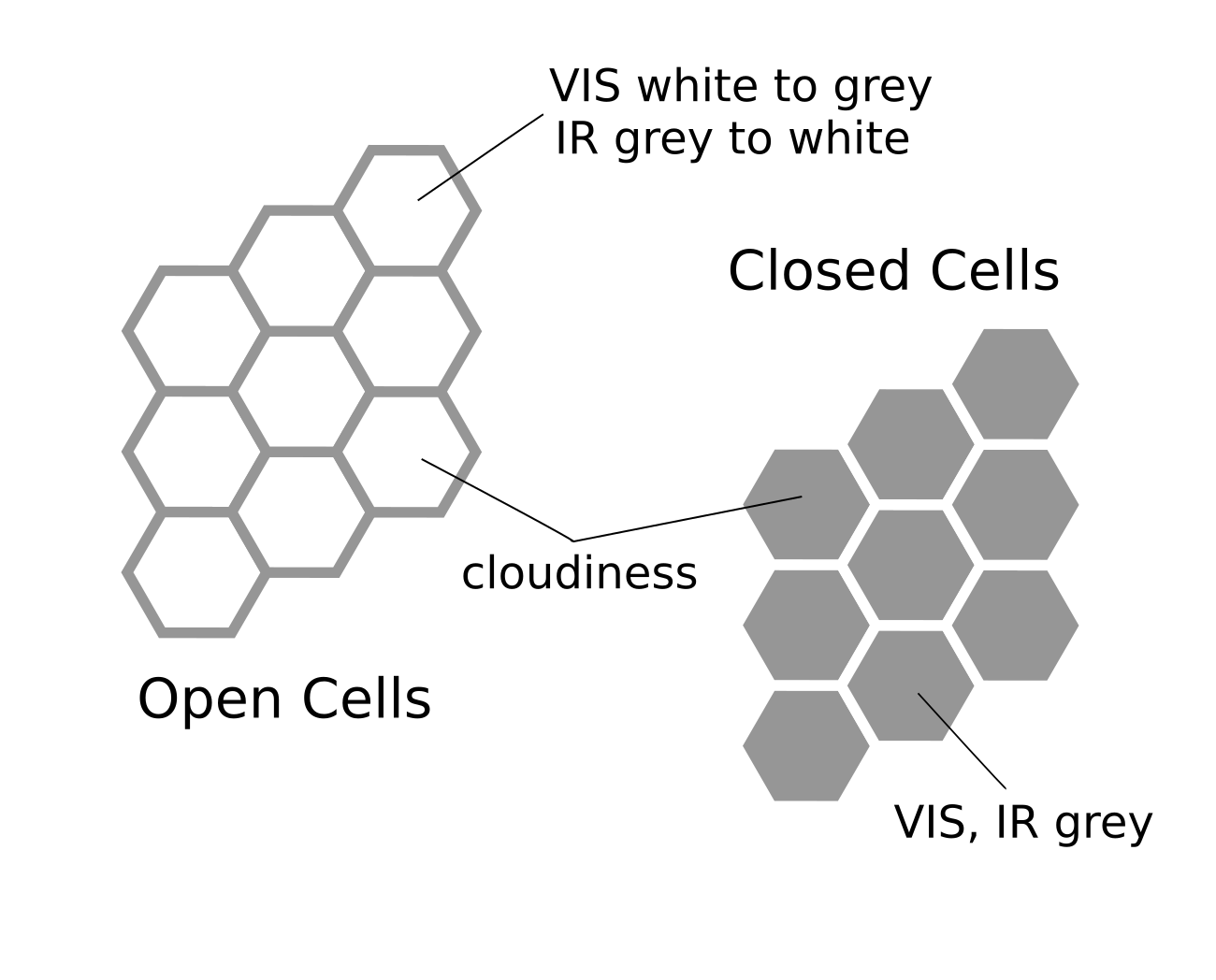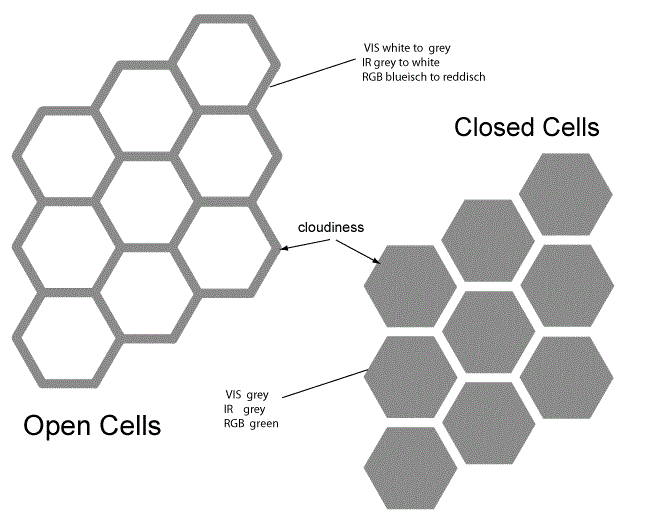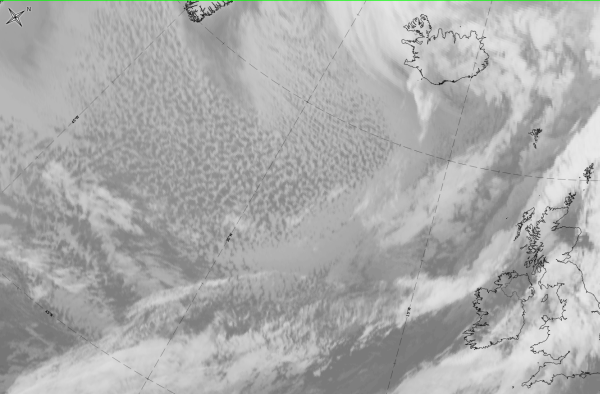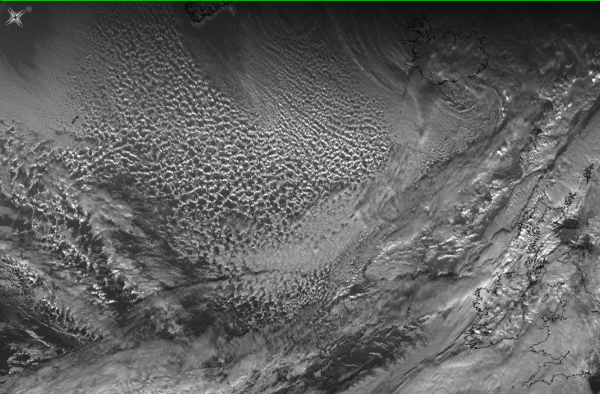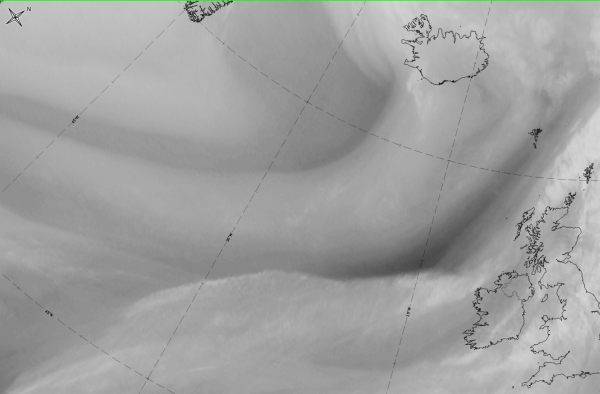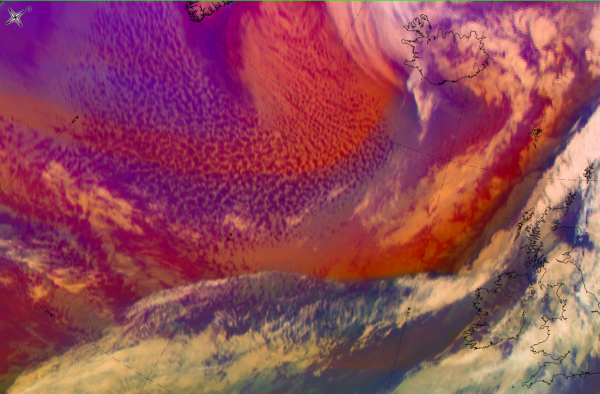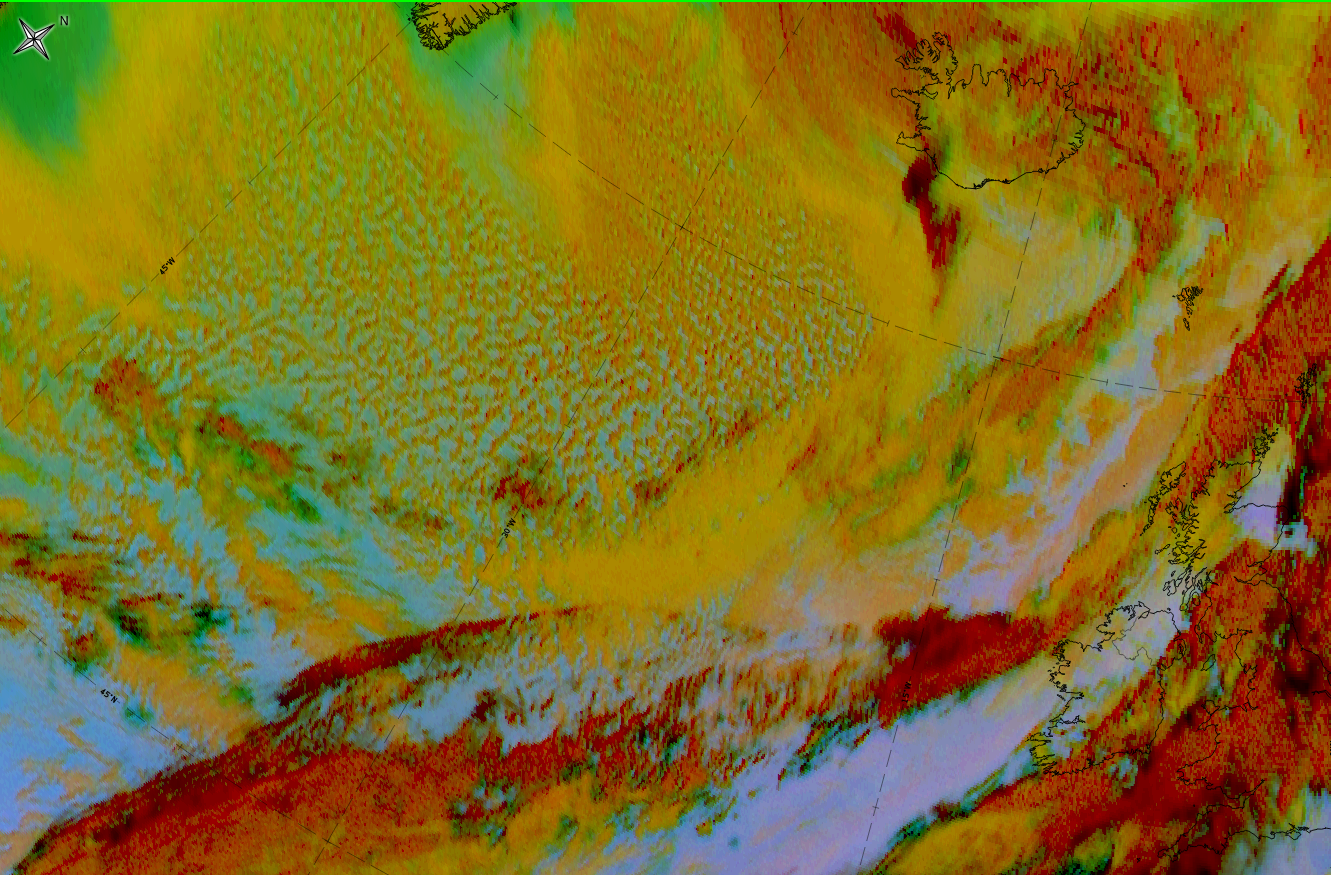Cloud Structure In Satellite Images
On satellite images, open and closed cells (OCs and CCs) appear as honeycomb-like (or hexagonal) patterns of cloudiness. In the case of open cells the centres are cloud free and the edges of the honeycomb are cloudy. In the case of closed cells the structure is reversed; the centres are cloudy and the edges are cloud free. The clouds of closed cells are in general shallower in depth than those of open cells. The diameters of the cells generally increase with increasing distance downstream.
Appearance in the basic channels:
IR:
In Meteosat IR imagery the pattern of open cells is easily discernible, due to the temperature difference between the cloud tops at the borders and the surface in the cloud free centres. Closed cells are not so easily discernible in IR imagery. This is due to the extensive cloud cover, which has a small temperature contrast at the cloud tops. Due to this small temperature contrast, a region of closed cells has a rather 'smooth' appearance in IR imagery, and the hexagonal cellular structure is not visible unless the cells start to break up so that the cloud free zones between them grow wider. Closed cells have the 'smooth' appearance in IR imagery in common with other low clouds, e.g. stratus/fog and stratocumulus sheets.
HRVis, Vis0.6 and Vis0.8 µm imagery
The hexagonal patterns of open and closed cellular convection (OCC/CCC) can easily be seen in Meteosat-8 VIS imagery. In the HRVIS images the cellular structure is even more visible due to the increased resolution.
WV6.2 and 7.3 µm imagery
In the 6.2 WV channels the OCC/CCC are normally not visible, due to their limited vertical extent (usually only up to 1 - 5 km), while the 7.3 WV channel will reveal some structure. WV imagery however, can be useful indirectly: the horizontal advection of upper-level moist air (although without associated clouds) over the CCC sheets may change the radiation balance of clouds, further leading to evaporation of the cloud sheet.
Appearance in the basic RGBs
Airmass RGB
Open and closed cells both appear within a cold air mass. Therefore, there are blue and dark brown colours each for the cold and dry airmasses, respectively. While the open cells appear more to the north of the cold air, closed cells appear more in the southern or southwestern parts where airmasses are warmer. Therefore, open cells are usually overrun by dark brown or blue colours, while closed cells often appear under a greenish shadow.
Dust RGB
The large areas of regular open and closed cell convection are superimposed within large areas of blue colours representing cloud free ground below.
The cloud parts of the open cell convection are ochre for mid-level convection but also dark red where convection has matured. The closed cells are usually smaller in height and appear mostly in ochre colours.
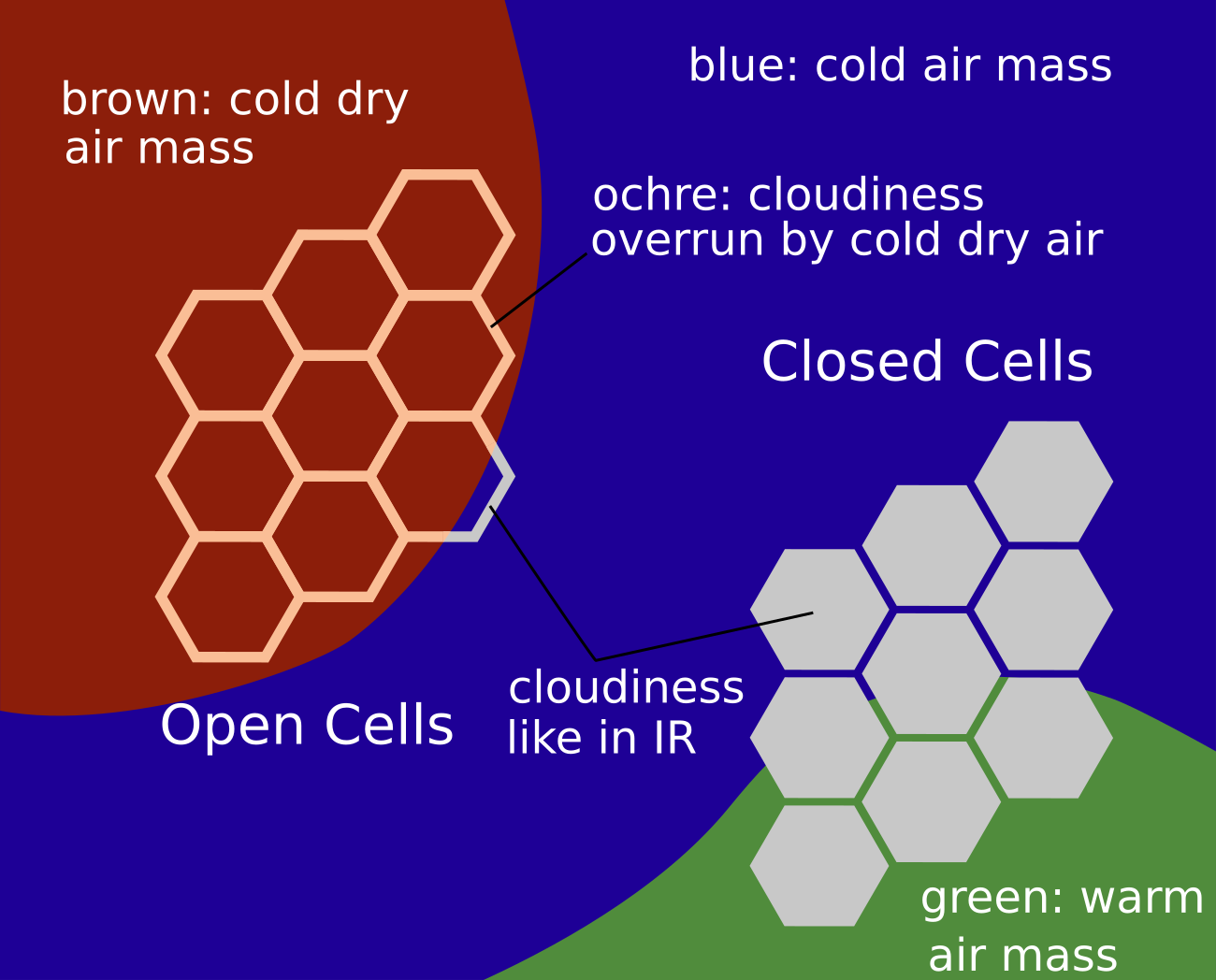 |
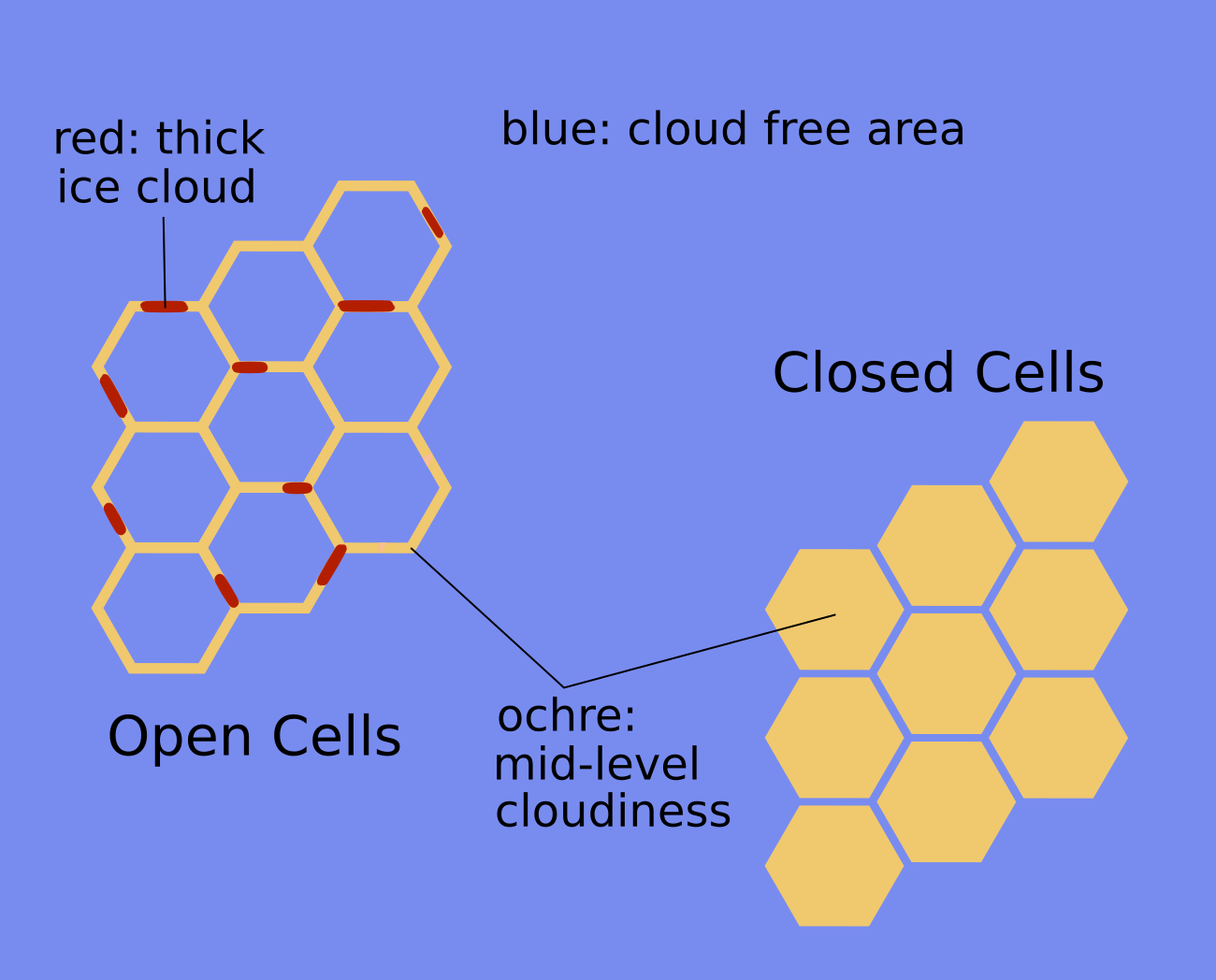 |
Legend: schematics for basic RGBs, Left: airmass RGB; right: dust RGB
The example from 7 January 2020 at 12 UTC shows a large area of open cell convection in the north Atlantic extending from NW south of Greenland, southeast towards Ireland, as well as a smaller adjacent area to the southeast with closed cell convection.
|
|
|
|
7 January 2020 at 12UTC: 1st row: IR (above) + HRV (below); 2nd row: WV (above) + Airmass RGB (below); 3rd row: Dust RGB + image gallery.
*Note: click on the Dust RGB image to access image gallery (navigate using arrows on keyboard).
| IR | A regular pattern of open cells with dark grey cloud boundaries; a dark grey area to the southeast indicating the closed cell convection. |
| HRV | A regular pattern of open and closed cell convection; light grey to white clouds. |
| WV | No regular pattern of open and closed cells is recognisable but streams of high upper level humidity and dry stripes exist. |
| Airmass RGB | Dark brown areas for cold and dry, blue areas for cold air streams comparable to WV; open and closed cells are recognisable under the dark-brown and blue colours. |
| Dust RGB | Ochre colours for closed and open cells for mid-level cloud; dark-red spots indicate thicker convection there. |
